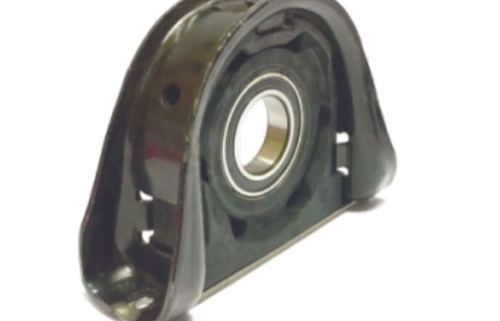Understanding the Importance of Center Support Bearings in Your Vehicle
When it comes to vehicle components, the center support bearing is a crucial part of the drivetrain system that often goes unnoticed but plays a vital role in ensuring smooth and efficient performance. For those in the automotive industry or DIY car enthusiasts, knowing the function and importance of the center support bearing can help in maintaining vehicle performance and preventing potential issues.
What is a Center Support Bearing?
A center support bearing, sometimes called a carrier bearing, is a component that supports the drive shaft of a vehicle, particularly in vehicles with a two-piece drive shaft system. This bearing is typically located at the midpoint of the drive shaft, ensuring that the rotating shaft is held securely in place while allowing it to spin freely.
The center support bearing consists of a rubber housing and a ball or roller bearing that allows for smooth rotational movement. Its main function is to reduce vibration and provide support for the drive shaft as it transmits torque from the engine to the differential, ensuring that power is effectively delivered to the wheels.
How Does a Center Support Bearing Work?
In vehicles with long drive shafts or those that have two-piece drive shafts, a center support bearing is necessary to reduce the strain on the drive shaft and prevent excessive wear. Here’s how it works:
- Support and Stability: As the drive shaft rotates at high speeds, the center support bearing holds the shaft in place, preventing it from sagging or misaligning. This helps maintain the proper angle and alignment of the shaft, allowing for smooth power transmission.
- Reducing Vibration: The rubber housing of the center support bearing helps to absorb vibrations that occur during the rotation of the drive shaft. Without this bearing, vibrations could travel through the drivetrain and be felt in the cabin, leading to an uncomfortable driving experience.
- Maintaining Balance: The bearing allows the drive shaft to rotate freely while keeping it balanced. This balance is crucial for preventing unnecessary wear on the drivetrain components and ensuring long-lasting performance.
Signs of a Failing Center Support Bearing
Like any other component in your vehicle, the center support bearing can wear out over time. Identifying the signs of a failing bearing can help prevent further damage to the drivetrain and avoid costly repairs.
- Vibrations While Driving: One of the most common symptoms of a failing center support bearing is excessive vibration, especially when accelerating. If the bearing is damaged or the rubber housing has worn out, it can no longer absorb the vibrations from the drive shaft, causing noticeable shaking.
- Clunking or Thumping Noises: Unusual noises, such as clunking or thumping sounds, coming from underneath the vehicle may indicate that the center support bearing is worn or misaligned. These noises usually occur when accelerating or decelerating.
- Drive Shaft Misalignment: A damaged center support bearing can cause the drive shaft to sag or become misaligned. This misalignment may lead to uneven power distribution and affect the vehicle’s handling.
- Premature Wear on Other Components: If the center support bearing fails, it can put additional strain on other parts of the drivetrain, such as the universal joints or the differential. This added stress may lead to premature wear on these components, resulting in further mechanical issues.
Replacing a Center Support Bearing
When a center support bearing shows signs of wear or failure, it’s important to replace it promptly to avoid further damage to the drivetrain. While some experienced DIY mechanics may be able to handle the replacement, it often requires specialized tools and expertise. Here are the general steps involved in replacing a center support bearing:
- Remove the Drive Shaft: The first step is to safely elevate the vehicle and remove the drive shaft, ensuring that all components are properly marked for reinstallation.
- Remove the Old Bearing: The worn center support bearing is then removed by separating the two halves of the drive shaft. This may require a press or puller to remove the old bearing from its position.
- Install the New Bearing: Once the old bearing is removed, the new center support bearing is pressed into place. It’s essential to ensure that the new bearing is correctly aligned to prevent future issues.
- Reinstall the Drive Shaft: Finally, the drive shaft is reinstalled, and all components are properly torqued to ensure a secure fit. After installation, the vehicle should be tested to check for proper alignment and to ensure the issue has been resolved.
Maintenance Tips for Longevity
To extend the lifespan of your center support bearing and other drivetrain components, regular maintenance is key. Here are a few tips:
- Inspect the Drive Shaft Regularly: Regular inspections of the drive shaft and center support bearing can help detect issues early. Look for signs of wear, damage to the rubber housing, or misalignment.
- Lubrication: Ensure that the universal joints and other moving parts in the drivetrain are properly lubricated to reduce friction and wear. Some center support bearings are sealed and do not require lubrication, but it’s always a good idea to check the manufacturer’s recommendations.
- Monitor Vibrations: Pay attention to any unusual vibrations or noises while driving. If you notice anything out of the ordinary, have your vehicle inspected by a professional mechanic to prevent further damage.
Conclusion
A center support bearing plays a critical role in maintaining the smooth operation of your vehicle’s drivetrain. It supports the drive shaft, reduces vibration, and ensures proper power transmission from the engine to the wheels. Keeping an eye on the health of this component and replacing it when necessary will help avoid costly repairs and ensure a comfortable and safe driving experience. Whether you’re an auto parts enthusiast or simply looking to maintain your vehicle, understanding the importance of the center support bearing is essential for long-term vehicle care.




